(QBĐT) - Having worked with ethnic minorities for more than 20 years, we, the Party journalists, sometimes wonder: When did wet rice "have a relationship" with the Bru-Van Kieu, Ma Lieng, Khua, May, and Ma Coong people? Village elder Nguyen Van Linh, a party member with nearly 40 years of membership, former Party Cell Secretary, and Head of Sat village, Truong Son commune ( Quang Ninh ) affirmed, "When I started reclaiming land and establishing Sat village in 1986, I was able to grow wet rice." Village elder Nguyen Van Ba, Coi Da village, Ngan Thuy commune (Le Thuy) recalled, "The time when I mobilized people to stop the Nuoc Lanh stream to build an irrigation dam and grow two crops of wet rice was in 1982"... When I "had a relationship" with the ethnic minorities..., rice quickly entered the resolutions of party committees at all levels. The story of wet rice growing up the mountains is very long. As long as the journey to the East, to settle down and escape poverty of our people!
Prosperous fields in the middle of the Truong Son mountain range
Along the Truong Son mountain range from North to South, it is easy to come across rice fields owned by ethnic minorities: in Cao village, Lam Hoa commune (Tuyen Hoa) of the Ma Lieng people; in K-Ai village, Dan Hoa commune (Minh Hoa) of the Khua people; Ruc Lan field, Thuong Hoa commune (Minh Hoa) of the Ruc people... Deeper to the South, the Bru-Van Kieu people in Truong Son commune (Quang Ninh) cultivate wet rice in the villages of Khe Cat, Co Trang, Sat, Trung Son, Ben Duong, Da Chat.
In Lam Ninh, Khe Day, Khe Ngang, Hang Chuon villages of Truong Xuan commune (Quang Ninh), the Bru-Van Kieu people maintain stable two-crop rice cultivation. In Le Thuy district, the Bru-Van Kieu people in Da Coi, Cam Ly, Khe Giua villages (Ngan Thuy); Bach Dan, Tan Ly, Eo Bu-Chut Mut villages (Lam Thuy) have a more prosperous life thanks to knowing how to cultivate rice.
Going back in time, in 2010, the late General Secretary Nguyen Phu Trong, then a member of the Politburo and Chairman of the National Assembly, visited and worked in Quang Binh province. The Standing Deputy Secretary of the Provincial Party Committee and Chairman of the Provincial People's Council, Tran Hai Chau, who was then Vice Chairman of the People's Committee of Quang Ninh district, along with district and provincial leaders, accompanied the working delegation of National Assembly Chairman Nguyen Phu Trong to visit some Bru-Van Kieu ethnic minority villages in the mountainous commune of Truong Xuan.
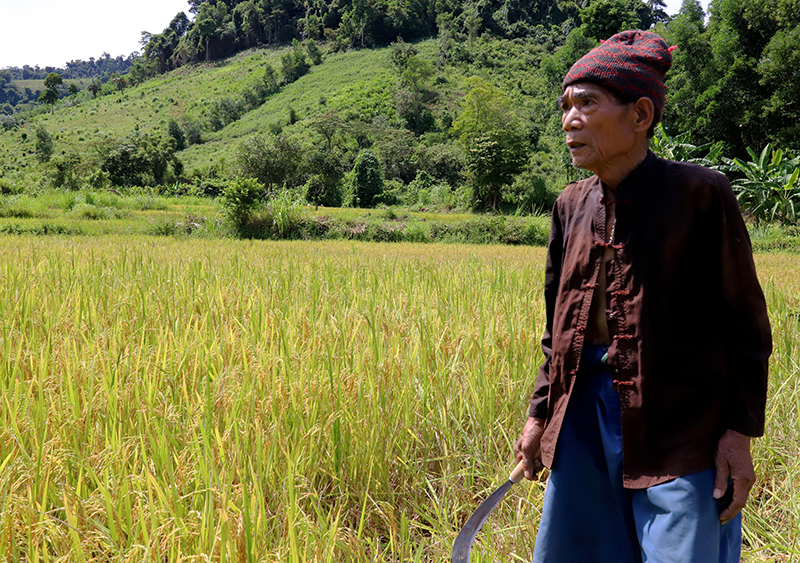 |
Comrade Tran Hai Chau recalled: Visiting Khe Day cultural village, I learned that the people no longer destroy forests to make fields, live sedentary lives, abandon the backward slash-and-burn production method, switch to wet rice cultivation, and have had many consecutive years of good harvests, ensuring daily food needs. From the success of the Khe Day wet rice model, the Truong Xuan commune Party Committee built a specialized resolution, focusing on directing the entire political system to replicate the wet rice model in Lam Ninh, Khe Ngang, Hang Chuon villages... National Assembly Chairman Nguyen Phu Trong was very happy, moved, and praised the spirit of solidarity, daring to think, daring to do of the people.
“During the field trip in 2010 and later, during his visits and working sessions with Quang Binh province in his new position, General Secretary Nguyen Phu Trong always had his own instructions on caring for the lives of ethnic minorities. Resolution No. 08-NQ/TU of the Provincial Party Committee was soon formed, in addition to the necessary practical requirements of the life of ethnic minorities, it also had its starting point from the deep feelings and inspiring ideas of the late General Secretary Nguyen Phu Trong,” comrade Tran Hai Chau shared.
Gratitude of rice plants growing up
The story of the rice growing up the mountain, helping the lives of ethnic minorities change, is filled with so much gratitude. The gratitude of the Party, Uncle Ho, Party committees at all levels, and the government towards the people; the gratitude between the lowlands and the highlands; in which the deepest gratitude is for the soldiers in green uniforms - the Border Guard force (BĐBP) on the forest border.
When we made the journey to visit the prosperous rice fields in the middle of the Truong Son mountain range, we still clearly remember the image of Colonel Trinh Thanh Binh, Commander of the Provincial Border Guard Command in 2010, when the Ruc Lan field was gradually taking shape. At that time, he was the Chief of the Ca Xeng Border Guard Station, stationed at Mo O O O village, Thuong Hoa commune (Minh Hoa), mobilizing all officers and soldiers of the station to go to the forest to cut down wild trees to make green manure to improve the fields. The station chief rolled up his pants above his knees and waded through the mud with the soldiers, plowing, hoing, building dams, and building banks to prepare for the first sowing season.
“The relationship between the Border Guard and wet rice helps the ethnic minorities start from the starting point in Tan Ly village, Lam Thuy commune (Le Thuy) in 2009, with an area of about 3 hectares. After the success of the wet rice model in Tan Ly village, there was the Ruc Lan field in 2010, with an area of 10 hectares, helping the Ruc and Sach people in the three villages of On, Yen Hop, Mo O O O, Thuong Hoa commune. Next, the model was expanded in K-Ai village in 2011, with an area of 5 hectares. Up to now, we can be proud that the wet rice models led by the Border Guard to help people have all been successful, contributing to stabilizing local food security. With the motto of “four together” - “handshake and guide” - “transfer”, people in the benefiting areas have gradually become familiar with new production methods, applying machinery, science and technology to production”, said Colonel Trinh Thanh Binh.
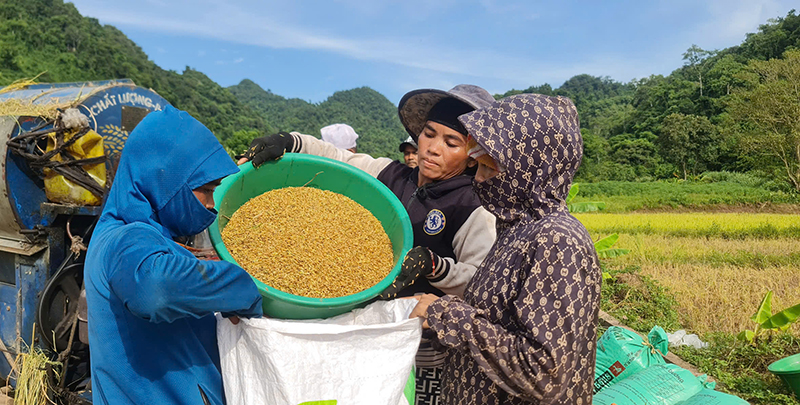 |
According to Lam Thuy Commune Party Secretary Hoang Kim: To form the wet rice model in Tan Ly village, the Provincial Border Guard Command and Lang Ho Border Guard Station mobilized more than 100 officers and soldiers with over 1,000 working days with the people to renovate more than 22,000m2 of wet rice fields; repair and upgrade Tan Ly irrigation dam; dredge 120m of irrigation canals, build 550m of rice fields, plant 700 pineapple trees and a green bamboo system to prevent erosion; and build a new 250m of road from the village center to the wet rice production area. In the first rice crop, Tan Ly village planted nearly 3ha, with a yield of 3.5 tons/ha, marking the starting point of a change.
Secretary of the Party Cell and Head of Mo O O O village Cao Xuan Long acknowledged: In the 14 years of putting Ruc Lan field into use, the Border Guard has put in a lot of effort and sweat to have the golden grain of prosperity like today. Now, the people of Mo O O O village have learned how to operate a plow to till the land; know how to soak rice seeds themselves, deploy planting according to the crop schedule; actively care for and prevent pests that harm the rice; focus on weeding the fields so that the rice can grow well according to the instructions of the border guards...
We returned to Tan Ly village in mid-September, when the summer-autumn rice crop was in full bloom and entering the harvest season. In Tan Ly now, the smooth asphalt road to the fields connects the village center with the rice fields of Tan Ly 1, Tan Ly 2, and Tan Ly 3. Tan Ly village chief Ho Van Ngoc (born in 1985) said: “The rice area of the village has increased to 4.5 hectares. This year, thanks to favorable climate and weather, both rice crops were successful.”
In the ripe rice fields, I met the village elder Ho Via (born in 1949) and his wife harvesting rice. Enjoying the story about “rice plants, human life” of the Bru-Van Kieu people in Lam Thuy, old man Ho Via boasted: “I am one of the seven people who reclaimed the land and established the first village, and I am also the first person to participate in wet rice cultivation with an area of over 5 sao. When my children became husbands and wives, I gave each of them a sao as a dowry. Now I only keep about 1 sao. For several consecutive years, the rice harvest was good, about 7 bags of rice were harvested, enough for the couple to have enough to eat.”
Experiencing many changes and ups and downs on the journey of migration from Quang Tri, old man Ho Via experienced all the difficulties and hardships of a period of nomadic life of the Bru-Van Kieu people along the Truong Son mountain range. In the middle of a field laden with golden rice grains, old man Ho Via's voice rang out: "The lives of the people of Tan Ly village are no longer hungry. It's all thanks to the rice plant with its heavy love!"
| Lieutenant Colonel Nguyen Thai Duong, Party Secretary and Political Commissar of Ca Xeng Border Guard Station, shared: Resolution No. 345-NQ/DU on leading the implementation of Border Guard tasks and building a clean and strong Party Committee of Ca Xeng Border Guard Station continues to thoroughly implement key and key contents: Improving the effectiveness of advisory work for Party committees at all levels in implementing the national target program on sustainable poverty reduction, building new rural areas; socio-economic development in ethnic minority and mountainous areas in the 2021-2025 period; especially maintaining the effectiveness of the Ruc Lan wet rice model. |
Readers' Room Reporter Group
>> Lesson 4: The stomach is no longer hungry... the mind must be clear!
Source: https://www.baoquangbinh.vn/chinh-tri/202409/nghi-quyet-tu-long-dan-bai-3-cay-lua-len-non-tham-nghia-tham-tinh-2221178/


![[Photo] A delegation of 100 journalists from the Vietnam Journalists Association visits the soldiers and people of Truong Sa island district.](https://vphoto.vietnam.vn/thumb/1200x675/vietnam/resource/IMAGE/2025/5/30/0984a986227d4e988177f560d2e1563e)
![[Photo] Journalists moved to tears at the Memorial Service for the soldiers who died in Gac Ma](https://vphoto.vietnam.vn/thumb/1200x675/vietnam/resource/IMAGE/2025/5/30/9454613a55c54c16bf8c0efa51883456)
![[Photo] General Secretary To Lam receives Chief of the Central Office of the Lao People's Revolutionary Party](https://vphoto.vietnam.vn/thumb/1200x675/vietnam/resource/IMAGE/2025/5/30/140435f4b39d4599a3d17975dfb444c5)


![[Photo] National Conference "100 years of Vietnamese Revolutionary Press accompanying the glorious cause of the Party and the nation"](https://vphoto.vietnam.vn/thumb/1200x675/vietnam/resource/IMAGE/2025/5/30/1cf6cd5c8a934ebfa347028dcb08358c)




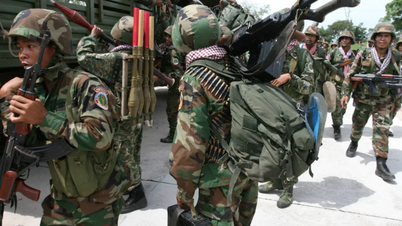



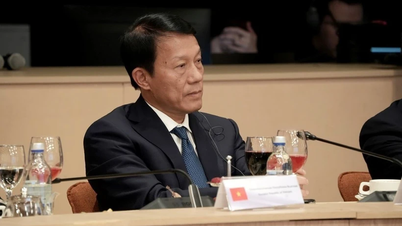
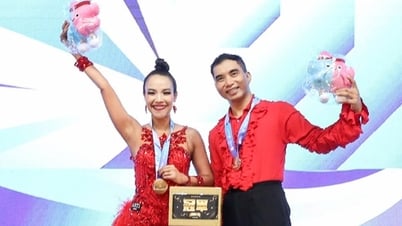

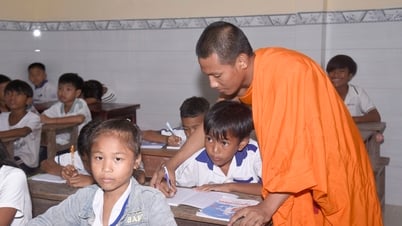
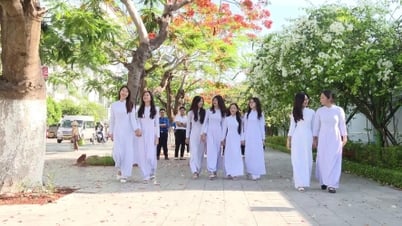
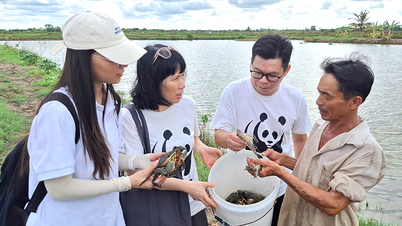
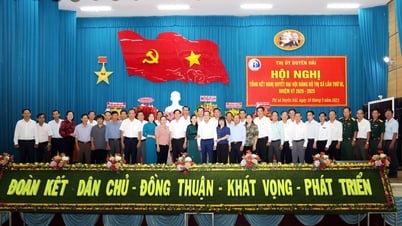
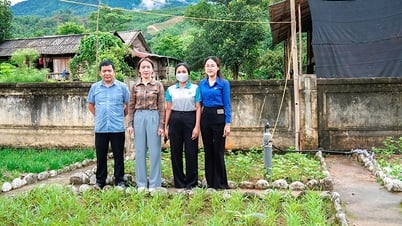

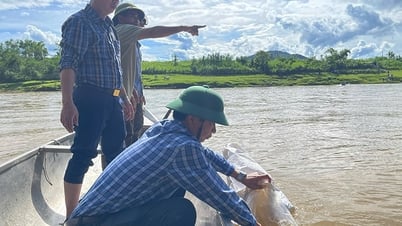




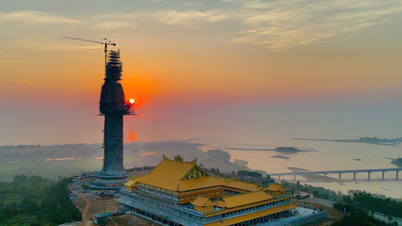


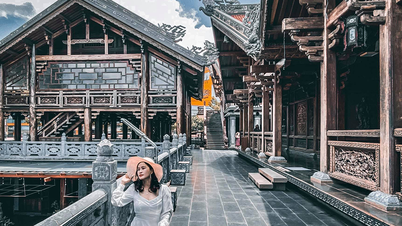
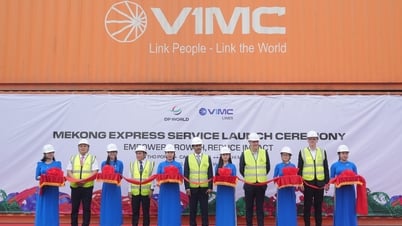




































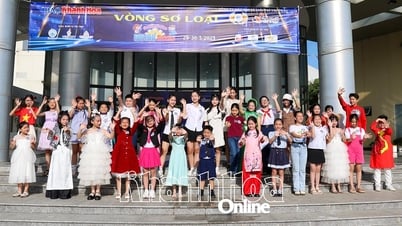

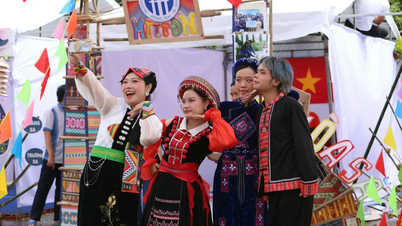

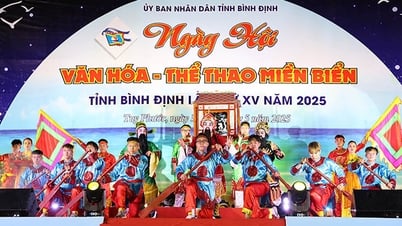














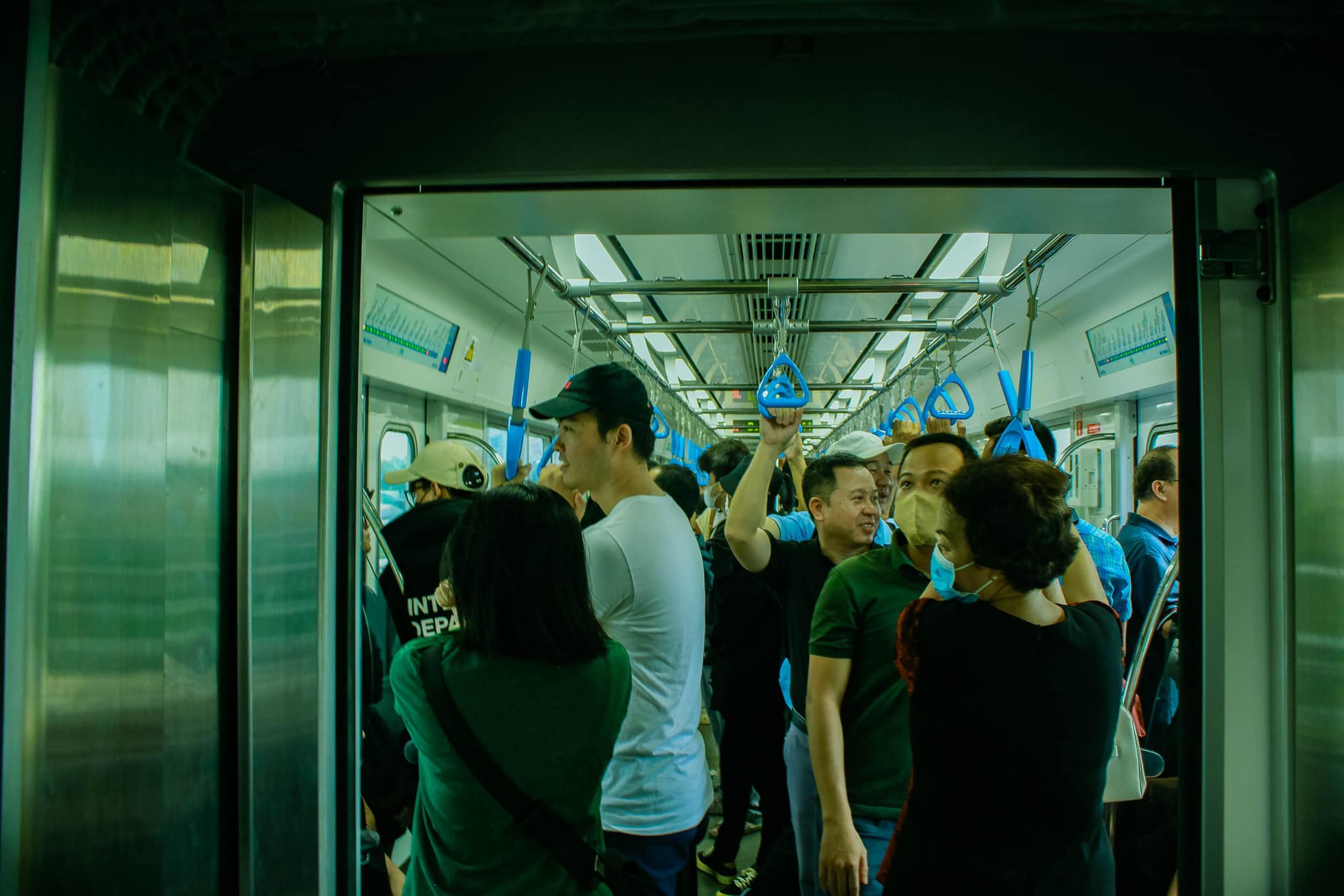



Comment (0)